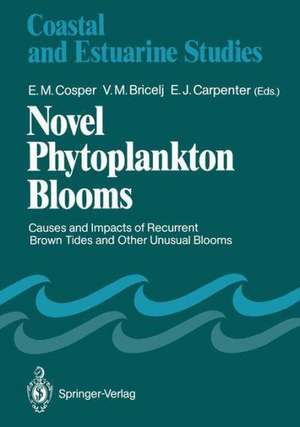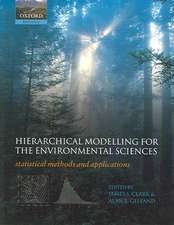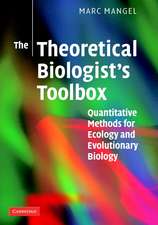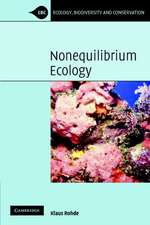Novel Phytoplankton Blooms: Causes and Impacts of Recurrent Brown Tides and Other Unusual Blooms: Coastal and Estuarine Studies, cartea 35
Editat de E.M. Cosper, V.M. Bricelj, E.J. Carpenteren Limba Engleză Paperback – 13 dec 2011
Din seria Coastal and Estuarine Studies
- 8%
 Preț: 502.60 lei
Preț: 502.60 lei - 15%
 Preț: 641.53 lei
Preț: 641.53 lei - 15%
 Preț: 636.45 lei
Preț: 636.45 lei - 15%
 Preț: 642.83 lei
Preț: 642.83 lei -
 Preț: 394.87 lei
Preț: 394.87 lei -
 Preț: 393.90 lei
Preț: 393.90 lei - 15%
 Preț: 655.27 lei
Preț: 655.27 lei -
 Preț: 408.16 lei
Preț: 408.16 lei -
 Preț: 390.25 lei
Preț: 390.25 lei -
 Preț: 393.74 lei
Preț: 393.74 lei - 15%
 Preț: 637.59 lei
Preț: 637.59 lei - 15%
 Preț: 638.57 lei
Preț: 638.57 lei -
 Preț: 381.98 lei
Preț: 381.98 lei -
 Preț: 398.53 lei
Preț: 398.53 lei - 15%
 Preț: 642.51 lei
Preț: 642.51 lei -
 Preț: 399.29 lei
Preț: 399.29 lei -
 Preț: 389.70 lei
Preț: 389.70 lei - 15%
 Preț: 647.08 lei
Preț: 647.08 lei - 15%
 Preț: 652.17 lei
Preț: 652.17 lei -
 Preț: 391.79 lei
Preț: 391.79 lei - 18%
 Preț: 948.79 lei
Preț: 948.79 lei - 15%
 Preț: 642.68 lei
Preț: 642.68 lei -
 Preț: 386.00 lei
Preț: 386.00 lei - 15%
 Preț: 647.73 lei
Preț: 647.73 lei - 18%
 Preț: 957.44 lei
Preț: 957.44 lei - 15%
 Preț: 638.89 lei
Preț: 638.89 lei - 15%
 Preț: 657.08 lei
Preț: 657.08 lei - 15%
 Preț: 650.86 lei
Preț: 650.86 lei - 15%
 Preț: 633.19 lei
Preț: 633.19 lei - 15%
 Preț: 638.24 lei
Preț: 638.24 lei -
 Preț: 382.36 lei
Preț: 382.36 lei - 15%
 Preț: 639.08 lei
Preț: 639.08 lei - 30%
 Preț: 408.28 lei
Preț: 408.28 lei - 31%
 Preț: 317.49 lei
Preț: 317.49 lei
Preț: 974.35 lei
Preț vechi: 1188.23 lei
-18% Nou
Puncte Express: 1462
Preț estimativ în valută:
186.44€ • 194.28$ • 154.37£
186.44€ • 194.28$ • 154.37£
Carte tipărită la comandă
Livrare economică 03-17 aprilie
Preluare comenzi: 021 569.72.76
Specificații
ISBN-13: 9783642752827
ISBN-10: 3642752829
Pagini: 816
Ilustrații: XII, 799 p.
Dimensiuni: 170 x 242 x 43 mm
Greutate: 1.28 kg
Ediția:Softcover reprint of the original 1st ed. 1989
Editura: Springer Berlin, Heidelberg
Colecția Springer
Seria Coastal and Estuarine Studies
Locul publicării:Berlin, Heidelberg, Germany
ISBN-10: 3642752829
Pagini: 816
Ilustrații: XII, 799 p.
Dimensiuni: 170 x 242 x 43 mm
Greutate: 1.28 kg
Ediția:Softcover reprint of the original 1st ed. 1989
Editura: Springer Berlin, Heidelberg
Colecția Springer
Seria Coastal and Estuarine Studies
Locul publicării:Berlin, Heidelberg, Germany
Public țintă
ResearchCuprins
A. Characterization of the “Brown Tide” Microalga.- 1. Picoplankton Ultrastructure: A Decade of Preparation for the Brown Tide Alga, Aureococcus anophagefferens.- 2. Autotrophic Picoplankton in Narragansett Bay and Their Interaction With Microplankton.- 3. Immunochemical Approaches to the Identification of the Ultraplankton: Assets and Limitations.- 4. Photosynthetic Pigment Composition of the Brown Tide Alga: Unique Chlorophyll and Carotenoid Derivatives.- 5. Absorption and Fluorescent Characteristics of the Brown Tide Chrysophyte. Its Role on Light Reduction in Coastal Marine Environments.- 6. Lipid Composition and Nutritional Value of the Brown Tide Alga Aureococcus anophagefferens.- 7. Dimethylsulfide Production and Marine Phytoplankton: An Additional Impact of Unusual Blooms.- B. Occurrence and Distribution of the “Brown Tide”.- 8. The Spatial and Temporal Distribution of “Brown Tide” in Eastern Long Island.- 9. Primary Productivity and Growth Dynamics of the “Brown Tide” in Long Island Embayments.- 10. The 1985 “Brown-Tide” and the Open Phytoplankton Niche in Narragansett Bay During Summer.- 11. Development and Distribution of a Brown-Water Algal Bloom in Barnegat Bay, New Jersey with Perspective on Resources and Other Red Tides in the Region.- 12. Immunofluorescent Detection of the Brown Tide Organism, Aureococcus anophagefferens.- C. Environmental Factors Influencing “Brown Tide” Blooms.- 13. Role of Environmental Variables, Specifically Organic Compounds and Micronutrients, in the Growth of the Chrysophyte Aureococcus anophagefferens.- 14. Brown Tide Bioassay: Growth of Aureococcus anophagefferens Hargraves et Sieburth in Various Known Toxicants.- 15. Trophic Interactions Between Nano- and Microzooplankton and the “Brown Tide”.- 16.The Case for Meteorologically Driven Fluctuations in Residence Times of Long Island Waters Subject to Algal Blooms.- 17. Brown Tide Dynamics as a Catastrophe Model.- 18. An Examination of the Environmental Factors Important to Initiating and Sustaining “Brown Tide” Blooms.- D. Other Unusual Microalgal Blooms.- 19. The Null Case of the Paradox of the Plankton.- 20. Gulf Stream Transport of the Toxic Red Tide Dinoflagellate Ptychodiscus brevis from Florida to North Carolina.- 21. Zooplankton Feeding Ecology: Copepod Grazing During an Expatriate Red Tide.- 22. Historical Perspective of Phytoplankton Blooms on Long Island and the Green Tides of the 1950’s.- 23. The Chrysochromulina polylepis Bloom in Scandinavian Waters During Spring 1988.- 24. From Anoxia to Fish Poisoning: The Last Ten Years of Phytoplankton Blooms in Swedish Marine Waters.- 25. An Extraordinary Red Tide and Fish Kill in Narragansett Bay.- 26. Primary Production and the Global Epidemic of Phytoplankton Blooms in the Sea: A Linkage?.- E. Impacts on Shellfish.- 27. Overview of Bay Scallop (Argopecten irradians) Landings.- 28. The Feeding Physiology and Growth of Bay Scallops and Mussels.- 29. Effects of the Brown Tide Alga on Growth, Feeding Physiology and Locomotory Behavior of Scallop Larvae (Argopecten irradians).- 30. Are Metabolites from the Brown Tide Alga, Aureococcus anophagefferens, Deleterious to Mussel Feeding Behavior?.- 31. Testing and Application of Biomonitoring Methods for Assessing Environmental Effects of Noxious Algal Blooms.- 32. Detrimental Biological Effects of Phytoplankton Blooms Deserve Increased Attention.- F. Impacts of Blooms on Finfish and Zooplankton.- 33. Abundance and Distribution of Zooplankton and Ichthyoplankton in Great South Bay, New York During the Brown TideOutbreaks of 1985 and 1986.- 34. Effect of the “Brown Tide” on Feeding, Size and Egg Laying Rate of Adult Female Acartia tonsa.- 35. Potential Change in the Distribution of Larval Fish Within Great South Bay, New York in Response to Recurrent Phytoplankton Blooms.- 36. Growth Rates of Bay Anchovy (Anchoa mitchilli) in Great South Bay Under Recurrent Brown Tide Conditions, Summers 1987 and 1988.- G. Impacts of Blooms on Eelgrass.- 37. Effect of “Brown Tide” Shading on Eelgrass (Zostera marina L.) Distributions.- 38. Simple Model of Eelgrass Growth and Water Quality: Another Catastrophe Theory?.- H. Environmental Management.- 39. Winter Burial of Transplanted Bay Scallops.- 40. The Fishery Manager’s Perspective on Unusual Algae Blooms.- 41. Brown Tide Comprehensive Assessment and Management Program.- 42. Water Quality Monitoring and Modeling for the Peconic Bay BTCAMP.- I. Postscript.- 43. Epilogue to the 2nd Brown Tide Conference: Are Aureococcus and Other Nuisance Algal Blooms Selectively Enriched by the Runoff of Turf Chemicals?.- 44. The Possible Role of Lawn Fertilizers and Pesticide Use in the Occurrence of the Brown Tide.- J. Index.
















